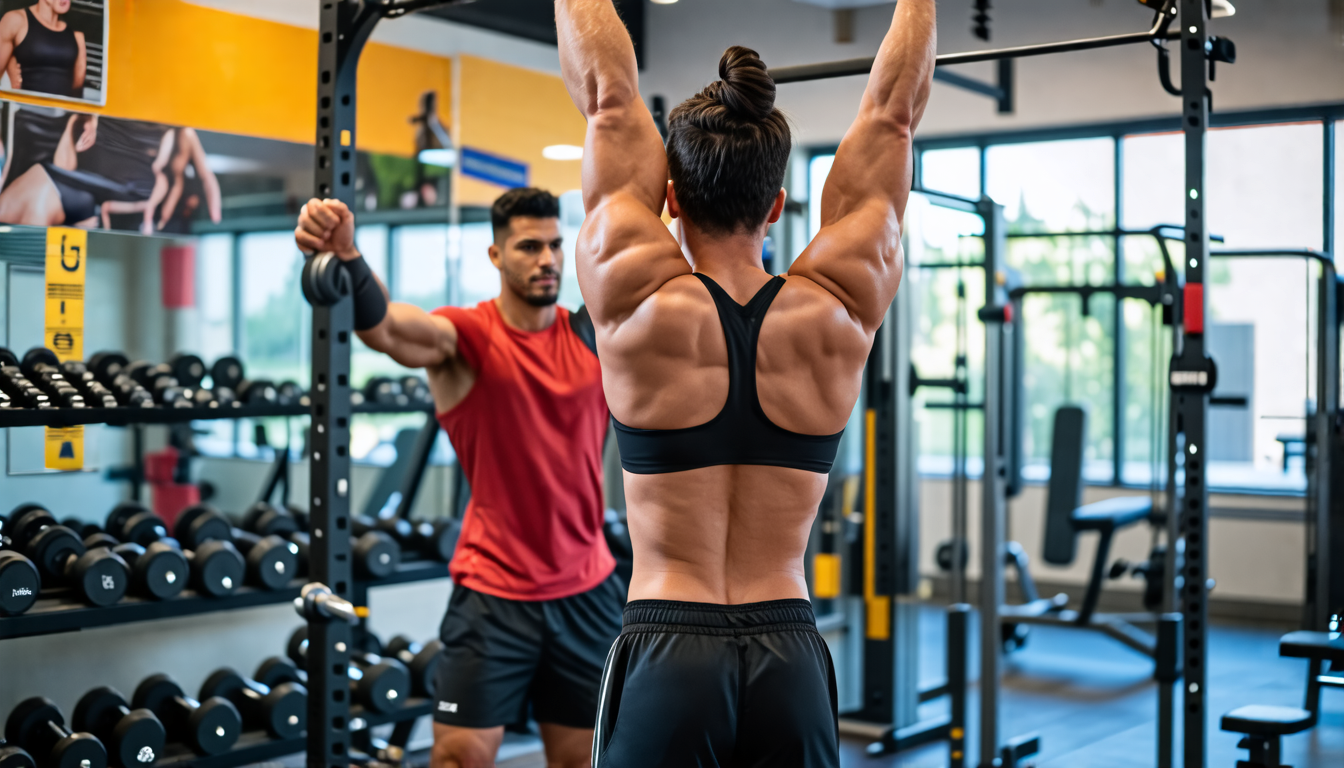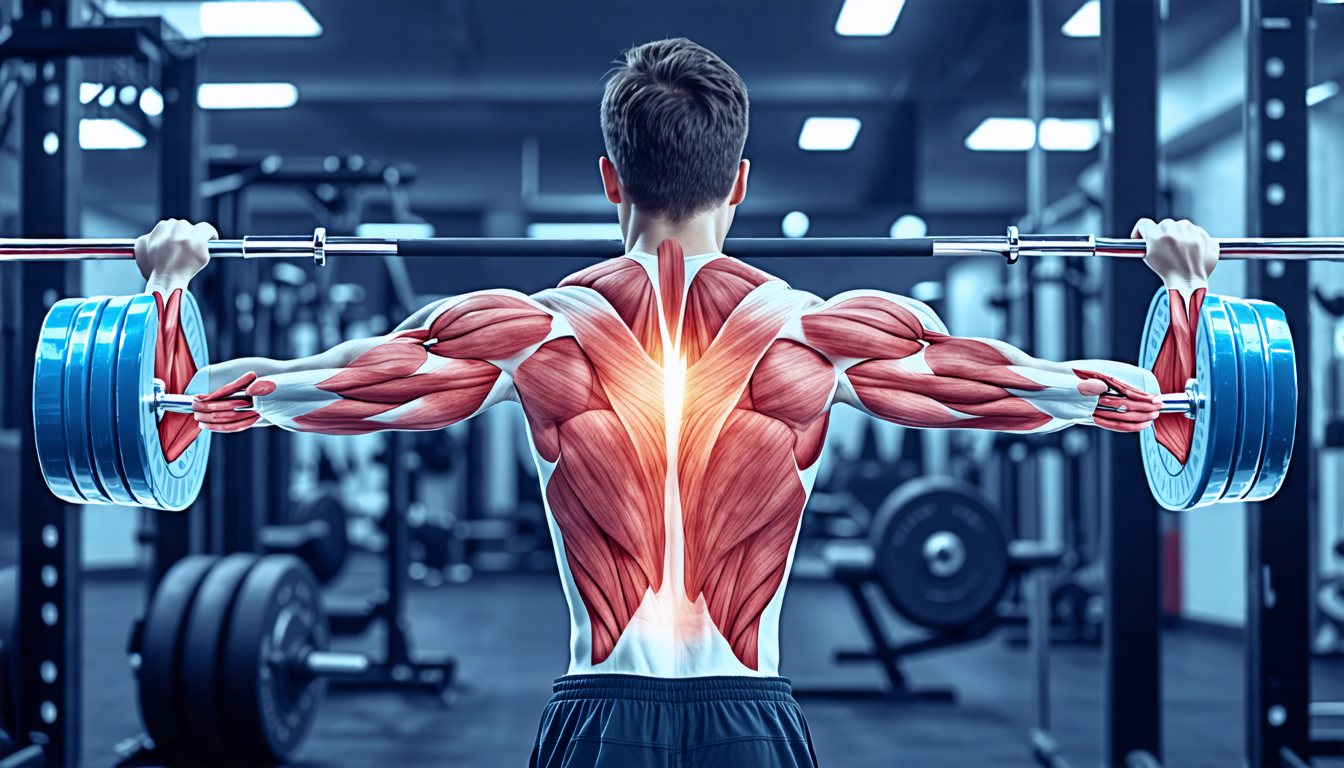Targeting back muscles effectively is crucial for anyone aiming to achieve a balanced fitness routine, and incorporating a fitness bar can significantly enhance the efficiency of your workouts. By understanding the anatomy of your back muscles—which include the latissimus dorsi, rhomboids, trapezius, and erector spinae—you can better appreciate their critical roles in stabilizing the spine, improving posture, and bolstering overall strength. This article delves into how to precisely target these muscles with a fitness bar, an essential tool in any home fitness setup. Not only does the fitness bar enable you to perform a variety of exercises like bent-over rows, barbell deadlifts, and barbell good mornings, but it also allows you to tailor these exercises for optimal growth and muscle endurance.
Using a fitness bar in your home workout routine can also aid in injury prevention and improve functional performance across a range of physical activities, ensuring that your back is both strong and resilient. Whether you’re aiming to increase muscle mass, enhance muscle definition, or boost endurance, the adaptability of the fitness bar offers progression and variation options to continually challenge your back muscles. By the end of this article, you’ll be equipped with the knowledge and techniques to maximize your home workouts, making your fitness bar an indispensable tool in your quest for a robust and healthy back.
To effectively target your back muscles with a fitness bar, it’s crucial to first understand the anatomy of the back and the significant role these muscles play in overall fitness. The back comprises several key muscle groups that not only contribute to posture and balance but also help in stabilizing the spine and generating power for various physical activities.
Latissimus Dorsi
The latissimus dorsi, often referred to as the lats, are the broadest muscles of the back, creating a wing-like appearance when developed. These muscles extend from the mid to lower back, sweeping out to the sides and inserting into the upper arm. They are mainly responsible for adduction, extension, and internal rotation of the shoulder joint. In the context of a home fitness bar workout, effectively targeting the lats can enhance upper body strength and help you perform pulling movements with greater efficiency.
Rhomboids
Located between the shoulder blades, the rhomboids consist of the rhomboid major and minor. These muscles play a vital role in retracting the scapula, which means they pull the shoulder blades towards the spine. Strengthening the rhomboids ensures that you maintain a good posture, helping to counteract the effects of prolonged sitting or slouching. Exercises using a fitness bar, like bent-over rows, can effectively isolate and activate these muscles.
Trapezius
The trapezius, or traps, is a large, diamond-shaped muscle that covers the upper back and extends down to the middle of the spine. It also stretches across the shoulder blades, contributing to shoulder movement and upper back stability. The trapezius is divisible into three parts: upper, middle, and lower. Each section serves distinct functions, including elevating, retracting, and depressing the scapula. Targeting the trapezius strengthens these areas and is crucial for lifting activities and improving overall upper body strength.
Erector Spinae
The erector spinae is a group of muscles and tendons running parallel to the spine, extending from the lower back up to the neck. This muscle group is essential for maintaining proper posture and enabling the spine to move in various directions, including extension and lateral flexion. Exercises like deadlifts performed with a fitness bar can engage the erector spinae, promoting a strong and stable back, which is critical for injury prevention.
Understanding the functions and significance of these muscles underscores why targeting them is essential for balanced fitness. Neglecting to train the back can lead to muscle imbalances, increasing the risk of injuries and compromising functional performance. By incorporating exercises with a fitness bar, you can work towards fostering a well-rounded muscular development, which not only enhances physical appearance but also ensures optimal performance in daily activities and sports.
The Importance of Targeting Back Muscles in Fitness
Targeting back muscles is vital for several reasons. Primarily, a strong back provides the foundation for a solid core and improves overall body mechanics. The back muscles play a pivotal role in stabilizing the spine, which is crucial for not only sports performance but also general movement and posture in everyday life.
A strong and well-balanced back helps enhance posture by addressing common postural issues such as rounded shoulders and forward head posture. Regular home workouts with a fitness bar can mitigate the negative effects of sedentary lifestyles or desk jobs, where poor posture often leads to back pain and discomfort.
Moreover, a robust back is essential for injury prevention. Many injuries, particularly in the shoulder, neck, and lower back regions, stem from weak or imbalanced back muscles. By incorporating back-targeting exercises into your fitness routine, not only do you fortify these areas against potential strain but also improve your capacity to perform lifting and pulling activities safely and effectively.
Furthermore, a strong back plays a significant role in enhancing functional performance across various physical activities. Whether you’re a fitness enthusiast or an athlete, having a well-developed back allows you to lift heavier weights, sustain longer durations in physical activities, and perform movements with better efficiency.
Finally, emphasizing back strength adds to your aesthetic goals. A defined back contributes to an impressive V-taper look, characterized by wide lats and a narrow waist. Using a fitness bar to perform compound movements can significantly contribute to muscle mass and definition, achieving that coveted shape.
In conclusion, understanding the anatomy of your back muscles and recognizing their importance in fitness is the first step towards an efficient and effective workout routine. Utilizing a home fitness bar for targeted exercises can help you achieve balanced muscular development, prevent injuries, and enhance your overall strength and performance.

Effective Fitness Bar Exercises for Strengthening Back Muscles
Incorporating a fitness bar into your home workouts can be a game-changer when it comes to targeting and strengthening back muscles. The versatility of the fitness bar allows for a wide range of exercises that focus on different parts of the back, each contributing towards building a robust and well-defined musculature. Below, we outline some effective fitness bar exercises that are designed to engage and develop your back muscles efficiently.
Bent-Over Rows
The bent-over row is a classic exercise that extensively targets the latissimus dorsi, rhomboids, and trapezius. To perform this exercise, start by standing with your feet shoulder-width apart, holding the fitness bar with an overhand grip. Maintain a slight bend in your knees and hinge forward at the hips, keeping your back straight and almost parallel to the floor. Pull the barbell towards your lower rib cage, squeezing your shoulder blades together at the top of the movement, and then slowly lower the bar back to the starting position. Proper form is crucial to avoid strain and maximize muscle engagement.
Barbell Deadlifts
Deadlifts are an exceptional compound exercise targeting the erector spinae along with various other muscles of the back. Start with the fitness bar on the ground, and stand with your feet hip-width apart. Grip the bar with an overhand or mixed grip, and lower your hips until your shins touch the bar. Keep your chest up and back flat. Drive through your heels to lift the bar, extending your knees and hips simultaneously until you’re standing tall with the bar in front of your thighs. Deadlifts not only enhance back strength but also improve overall body power and posture when incorporated into your home fitness bar routine.
Barbell Good Mornings
Barbell good mornings are excellent for targeting the lower back, particularly the erector spinae. Begin by placing the fitness bar across your upper back, not the neck, and secure it with both hands. Stand with your feet shoulder-width apart, and bend your knees slightly. Hinge at the hips, lowering your torso until it’s almost parallel to the floor while keeping your back straight. Slowly return to the standing position and repeat. This exercise can enhance flexibility and strength, making it a valuable addition to a comprehensive back workout scheme using a fitness bar.
Increased Muscle Mass and Definition
By integrating these exercises into your regular routine with a fitness bar, you’ll notice significant gains in muscle mass and definition over time. The fitness bar’s ability to support heavier weight lends itself to progressive overload, a key factor in muscle hypertrophy. Regular adaptations to your workout, such as increased weights or repetitions, are essential to continue challenging the muscles.
Enhanced Back Muscle Endurance
Beyond building size and strength, these fitness bar exercises contribute to enhanced muscular endurance. This is crucial for maintaining posture throughout the day and performing activities that require sustained back strength. Repeated engagement of the back muscles leads to greater stamina, allowing for extended performance in both daily tasks and athletic endeavors.
Progression and Variations for Intensity
To keep your workouts engaging and your muscles challenged, consider incorporating variations and progressions. For instance, using an underhand grip during bent-over rows can hit the biceps more, while deficit deadlifts (standing on an elevated surface) increase the range of motion and engagement. Good mornings performed at a faster tempo or with paused reps can significantly boost intensity and muscle control. As you become more comfortable and confident with these exercises, gradually increase the weight or experiment with different grips and stances to continue seeing progress.
Incorporating a range of fitness bar exercises targeting your back not only enhances your muscular development but also fortifies your body against potential injuries, resulting in a balanced and functional home fitness regime. Whether you’re aiming for aesthetics, strength, or endurance, these exercises are indispensable tools for advancing your back fitness right from the comfort of your home. By using a fitness bar effectively, you’ll not only sculpt your back muscles but also improve your overall physical performance and well-being.
In conclusion, effectively targeting back muscles using a fitness bar can significantly contribute to a balanced and comprehensive fitness regimen. Understanding the anatomy and function of the back muscles, such as the latissimus dorsi, rhomboids, trapezius, and erector spinae, underscores their vital role in stabilizing the spine, maintaining proper posture, and boosting overall strength. These muscles not only enhance functional performance in various activities but also play a crucial part in injury prevention. By incorporating fitness bar exercises like bent-over rows, barbell deadlifts, and barbell good mornings into your home workout routine, you can prime these muscles for strength and endurance. These exercises are instrumental in increasing muscle mass, improving definitions, and building core stability.
A fitness bar is an accessible and versatile piece of equipment that can be integrated into home gyms, making it convenient for individuals to target their back muscles effectively. Practicing proper form and technique is essential to maximize the benefits and minimize the risk of injury, especially in a home setting where professional supervision might not be readily available. Furthermore, individuals can progressively increase the intensity of their workouts by incorporating variations and gradually increasing the weights as their strength improves. Ultimately, leveraging a fitness bar for back muscle exercises provides an efficient and rewarding approach to achieving a well-rounded and robust physique, supporting both everyday activities and more demanding physical pursuits.

